FHWA-HEP-18-049
Printer-friendly PDF →
FHWA Eco-Logical Case Studies Series
A Business Case for Applying the Eco-Logical Approach Michigan I-75 Corridor
Agency: Michigan Department of Transportation (MDOT)
Eco-Logical is an approach designed to help transportation, resource, and regulatory agencies integrate their infrastructure development and conservation planning processes and arrive at a joint set of environmental priorities. It organizes current methods to address natural resource identification, avoidance, minimization, and compensation into a systematic, nine-step process that starts at the beginning of the transportation planning process and concludes with establishing programmatic approaches to recurring natural resource issues that are implemented at the project level. This is one case study in a series that highlights how transportation agencies around the country are implementing the nine steps of Eco-Logical.
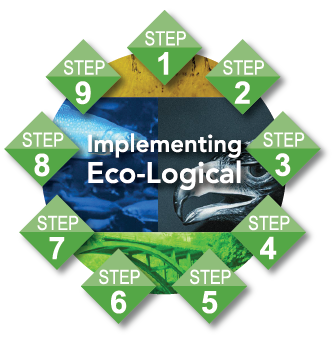
Benefits:
By fostering collaboration among transportation, natural resource, and regulatory agencies, the Eco-Logical approach:
- Accelerates the planning, development, and delivery of infrastructure projects.
- May reduce the time and cost of meeting environmental regulations while maximizing the avoidance of resources.
- Leads to better environmental outcomes.
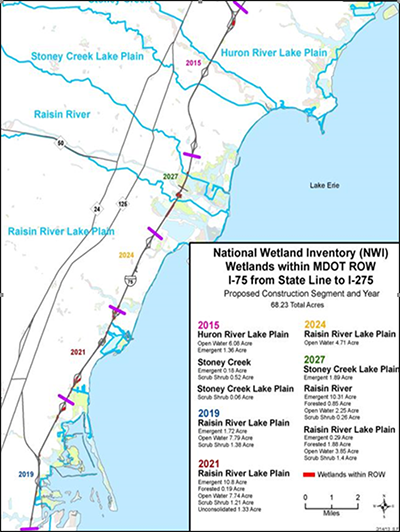
Figure 1. Five phases of the I-75 corridor project, with wetland resources mapped. Dates of construction may be subject to change. Source: MDOT.
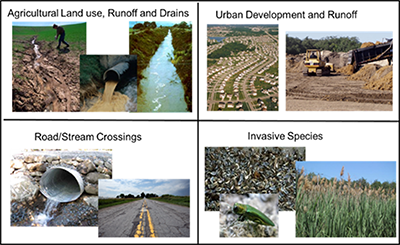
Figure 2. Conservation priorities identified by MDOT through viability assessment and prioritization process. Source: MDOT.
Table 1: Technical Advisory Committee Partners
| Organization |
| MDOT |
| Michigan Natural Features Inventory (MNFI) |
| Southeast Michigan Council of Governments (SEMCOG) |
| Michigan Department of Environmental Quality (MDEQ) |
| Michigan Department of Natural Resources (MDNR) |
| Michigan Department of Agriculture and Rural Development (MDARD) |
| County of Monroe |
| National Oceanic and Atmospheric Administration (NOAA) Sea Grant Michigan |
| The Nature Conservancy |
| Federal Highway Administration (FHWA) |
| U.S. Army Corps of Engineers (USACE) |
| U.S. Fish and Wildlife Service (FWS) |
| U.S. Department of Agriculture, Natural Resources Conservation Service (NRCS) |
Abstract
The Michigan Department of Transportation (MDOT) applied the Eco-Logical approach1 to the 20-mile I-75 reconstruction project, where it saved $1,043,740, improved permitting efficiencies and environmental outcomes, and enhanced interagency coordination. This business case illustrates how MDOT achieved these quantifiable benefits. Additional benefits are expected as MDOT applies this approach to the remaining project phases. MDOT will continue to track costs and benefits through the completion of all phases of the I-75 reconstruction. The Second Strategic Highway Research Program’s (SHRP2) Implementing Eco-Logical Implementation Assistance Program (IAP) provided $250,000 to support MDOT’s Eco-Logical efforts.
Background
The Michigan I-75 reconstruction project is a large and comprehensive effort led by MDOT and its partners at the Southeast Michigan Council of Governments (SEMCOG) and the Michigan Natural Features Inventory (MNFI). The study area spans several counties in southeast Michigan, with the majority of the project taking place in Monroe and Wayne Counties. The project began in 2015, with the first phase completed in 2016. MDOT anticipates the project to have an estimated duration of 20 years over five phases (Figure 1), and a total cost of $500 million.
Originally constructed in the 1950s, I-75 is the busiest freight corridor in Michigan. The freeway connects Michigan to Canada and the eastern and southern U.S., providing a vital commercial link for national and international trade that accounts for 21 percent of all U.S. exports to Canada.2
The land used for construction was originally Lake Erie coastal wetlands that had been drained for agricultural uses. The area today remains ecologically significant, containing globally imperiled ecosystems, including over 13,500 acres of wetlands, several major river systems, and a very productive Lake Erie nearshore and coastal zone, all adjacent to commercial agricultural land. Over time, however, these sensitive environmental resources have been depleted substantially; for example, rare plant communities, coastal marsh and tributaries, and wetlands have all lost between 50-99 percent of their historic acreage.
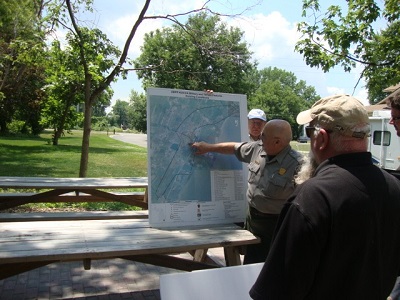
Figure 3. TAC meeting to discuss priorities and goals. Source: MDOT.
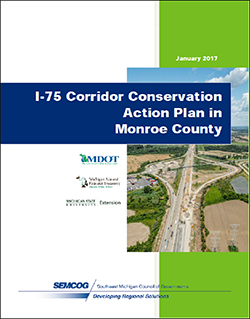
Figure 4. The I-75 Corridor Conservation Action Plan, January 2017. Source: MDOT.
The I-75 conservation plan assessed those resources and established conservation targets and mitigation priorities for project implementation. Conservation priorities were rolled up into the four strategies listed in Figure 2.
Coordination and collaboration among planning partners was critical for successful project implementation. Given the scale, reconstruction timeframes, stakeholder interests, environmental concerns, and the need to improve partner relationships throughout the life of the project, MDOT believed that applying an Eco-Logical approach could address key interagency coordination issues for the I-75 corridor while expediting project delivery.
To address I-75’s complicated ecological and regulatory circumstances, MDOT formed a Technical Advisory Committee (TAC), consisting of 13 organizational partners (Table 1). Through participation in the TAC, agencies gained a better understanding of each other’s processes and learned how they can work together to ensure these processes are executed smoothly and quickly.
As illustrated in Figure 3, the TAC guided the project through the formation of the Regional Ecosystem Framework (REF), which strengthened collaboration between stakeholders to identify data gaps and make recommendations on future data collection and inform key decisions for upcoming projects. Building off of the REF, the TAC supported the development of a Conservation Action Plan3 (Figure 4) for the I-75 corridor, which identifies existing environmental conditions and goals as well as conservation strategies to meet these goals in coordination with reconstruction.
The I-75 reconstruction project provides a unique case study to measure the benefits of implementing the Eco-Logical approach for two reasons: 1) It is a major five-phase transportation project allowing data to be potentially collected during each phase over a 20-year period; and 2) It is a regionally significant corridor spanning 20 miles that includes thousands of acres of ecologically significant resources.
The following pages describe FHWA’s methodology and findings from an assessment of the project’s first phase completed in 2016.
Business Case Methodology
MDOT believed the Eco-Logical approach would generate tangible benefits to the I-75 reconstruction project in the development and delivery processes. MDOT received $250,000 from the SHRP2 IAP to implement the Eco-Logical Approach. The SHRP2 IAP is a joint effort led by the FHWA and the American Association of State Highway and Transportation Officials (AASHTO). FHWA assessed the quantitative and qualitative effects of implementing the Eco-Logical framework on Phase 1 of the I-75 reconstruction project.
Quantitative Assessment
In its quantitative assessment, FHWA evaluated costs associated with compensatory mitigation for impacts to aquatic resources and state designated threatened and endangered plant species, the permitting process, interagency cooperation, and the TAC and REF.
FHWA applied a cost metric in a scenario comparison. The scenario comparison included:
Baseline Cost
FHWA used cost estimates from MDOT for Phase 1 of the I-75 reconstruction project as if MDOT did not employ Eco-Logical or receive SHRP2 IAP support. The baseline estimate does not include costs or benefits tied to the formation of the TAC, development of the REF, or the benefit of a Conservation Action Plan.
Actual Cost
FHWA used actual costs incurred on the I-75 reconstruction project, where MDOT did employ the Eco-Logical approach and received SHRP2 funding. This specifically includes costs and savings of the products produced through the TAC formation, REF development, and actions taken to achieve Phase 1 of the reconstruction project as documented in the Conservation Action Plan.
Cost Metrics
Four areas of project cost, savings, and benefits central to this analysis include: compensatory mitigation (as needed to comply with Section 404 of the Clean Water Act and State listed threatened and endangered plant species laws), permitting process, interagency cooperation, and TAC and REF development. These metrics were based on prior Eco-Logical efforts and work assessing the benefits of Planning and Environment Linkages (PEL)4 and Programmatic Agreements; and interviews with MDOT in fall 2016—in particular, to identify TAC and REF development metrics.
Compensatory Mitigation for Impacts to Aquatic Resources
The analysis compared the actual Section 404 procedural and permitting costs, including compensatory mitigation, to the estimated baseline case absent of TAC cooperation. Understanding and compensating for impacts to aquatic resources (as regulated under Section 404) was critical in MDOT’s application of the Eco-Logical approach for two reasons:
- The I-75 reconstruction project impacts Lake Erie coastal wetlands, requiring a Section 404 Permit for 8 acres of impacts to waters of the U.S., which include conditions for compensatory mitigation. Section 404 permits are required for the discharge of dredged or fill material into waters of the U.S. If impacts to waters of the U.S. are unavoidable, project impacts must be minimized to the maximum extent practicable, and may require compensatory mitigation.
- MDEQ administers Section 404 of the Clean Water Act, as approved by the U.S. Environmental Protection Agency, and includes assessing mitigation strategies.
State Designated Threatened and Endangered Plant Species Compensatory Mitigation
The I-75 project impacts a large population of Sullivant’s milkweed (Asclepias sullivantii), which is a state-designated threatened plant species. The I-75 right-of-way features spacious grassy embankments which are suitable habitat for Sullivant’s milkweed. Michigan prioritizes conservation of Sullivant’s milkweed as it provides habitat for essential pollinators important to Michigan’s agricultural communities.
MDOT activities related to identification of appropriate compensatory mitigation for aquatic resources and state threatened and endangered species included: needs assessment; site identification mitigation plan development; site selection and procurement; and development of a mitigation performance plan.
Permitting Process and Interagency Cooperation
MDOT experienced time and cost savings in project development and delivery by assembling the TAC and working collaboratively through Eco-Logical’s stepped process. MDOT provided cost estimates of traditional processes which FHWA compared to the Eco-Logical scenario to perform a quantitative assessment of cost savings. A qualitative assessment of enhanced relationships between TAC partners regarding shared resources, public relations, and future implications was also conducted. These assessments are summarized in Tables 3 and 4 respectively.
TAC and REF Development
The TAC agencies devoted substantial personnel resources to developing the REF in addition to their work on the Conservation Action Plan. Early collaboration between partners to develop the REF was expected to improve the delivery time and overall savings later in the process; these efforts would not have been an element of a traditional planning process. To coordinate the TAC, the MNFI provided a conservation planner who led the monthly TAC meetings over a period of 15 months. MDOT also estimates that partner agencies donated hundreds of hours of staff time to multiple parts of this effort. While SHRP2 funding supported MDOT’s efforts to organize and manage the TAC, as well as REF and CAP development, additional MDOT and partner agency labor hours were unquantified.
Data Sources
MDOT was the primary data source. It shared information and documented savings related to compensatory mitigation for wetlands and threatened and endangered species. This analysis relied on MDOT’s standard planning cost estimates and permitting timelines, and mitigation implementation. The analysis relied on this data because:
- Complete cost information related to developing the REF and costs that would have been incurred in a baseline approach was unavailable.
- No projects in Michigan presented a suitable reference case.
Cost Comparison
MDOT developed more efficient permitting practices and increased predictability of the review process by working cooperatively with regulatory agencies at the outset of the project. The cost comparison is focused on two key areas of process improvement—Section 404 permitting and state designated threatened and endangered plant species compensatory mitigation. Specific cost savings related to TAC development and coordination are not included here.
Section 404 of the Clean Water Act
There was an estimated savings of $884,000 in land acquisition associated with wetland mitigation. The estimated mitigation cost savings were largely due to MDOT’s ability to utilize available MDNR land versus acquiring commercially available land. Utilizing the REF, MDNR identified nearly 120 acres of a State-owned game reserve for compensatory mitigation activities. The actual cost was compared against an average cost per acre for previous MDOT projects. The per acre savings was then multiplied by the total number of acres to determine the overall mitigation cost savings. Table 2 presents the calculation.
Table 2. MDOT Wetlands Mitigation Cost Comparison
| Cost Item |
Actual Cost/Acre |
Baseline Cost/Acre |
Savings/Acre |
| Expense per Mitigation Acre |
$33,976 |
$60,200* |
$26,224 |
| Wetland Mitigation Acreage (33.7) |
|
|
|
| MDOT Mitigation Cost Savings |
|
|
$883,740** |
*Average of MDOT costs over the past 12 years.
**33.7 acres multiplied by $26,224 savings/acre.
The Eco-Logical approach helped MDOT utilize its MDNR partnership, anticipate wetland impacts and mitigation opportunities in coordination with MDEQ, identify land and priorities early in the process to generate cost savings, improve predictability, and provide for long-term management of the mitigation lands. Additionally, TAC collaboration with MDNR and the USACE developed though the Eco-Logical process, directly led to improved mitigation benefits and environmental outcomes.
Coastal wetland areas along the I-75 corridor provide substantial environmental benefits and services to both the natural and human environment. This can often lead to significant challenges for transportation projects to identify opportunities for appropriate in-kind compensatory mitigation. Specifically, the Eco-Logical approach allowed MDOT to:
- Work directly with MDEQ and USACE in identifying potential impacts and mitigation. This collaboration was particularly important as MDEQ was acting in a dual role as a State and Federal permitting agency.
- Forecast mitigation needs and mitigation for Phase 1 by leveraging the TAC and the project’s REF.
- Proactively mitigate for impacts to the project with beneficial outcomes to MDOT and MDNR. MDOT partnered with MDNR to identify a nearby state-owned game area that MDOT can use for compensatory mitigation. MDNR saved MDOT the cost of land procurement, while MDOT saved MDNR design and construction costs associated by providing $900,000 in funding for the wetland restoration.
- Improve permitting efficiencies and save more than $1 million in MDOT staff and consulting costs through advanced planning.5
- Ensure long-term wetland mitigation management as the land is retained and managed by MDNR, reducing long-term mitigation costs to MDOT.
State listed threatened and endangered plant species
MDOT saved approximately $160,000 by applying the Eco-Logical approach towards mitigating impacts to Sullivant’s Milkweed when compared to the baseline scenario. In the absence of the Eco-Logical approach, MDOT may have pursued a state incidental take permit and incurred additional mitigation costs.
Sullivant’s Milkweed-State Listed Species
The I-75 reconstruction project impacts a large population of Sullivant’s milkweed, which thrives in the project’s right-of-way. Therefore, mitigation focused on transplanting the Sullivant’s milkweed to Sterling State Park, which is owned and managed by MDNR. As a result of the REF, MDNR assisted MDOT by identifying this suitable site for mitigation. This ambitious mitigation process was only feasible due to support from MDNR staff and the YouthCorps program which limited MDOT’s investment of staff time.
MDOT costs for the mitigation of this endangered plant, compared to the baseline scenario, can be summarized in four parts and are summarized in Table 3.
Table 3. MDOT Threatened and Endangered Plant Mitigation Cost Comparison
| Cost Item |
Actual Costs |
Baseline Costs |
Savings |
| |
|
|
|
| Identifying mitigation needs |
|
|
|
- Office review & partner coordination
|
$10,200 |
$10,200 |
|
|
|
$24,000 |
$24,000 |
|
- GIS work, impact analysis, and development of mitigation plan
|
$12,160 |
$12,160 |
|
| |
$46,400 |
$46,400 |
$0 |
| Project mitigation |
|
|
|
|
|
$6,400 |
$6,400 |
|
- Mitigation coordination/implementation
|
$28,000 |
$52,000 |
|
| Without volunteer support and interagency coordination under Eco-Logical, MDOT estimated an additional 300 staff hours would be needed to do the mitigation. The 300 staff hours were estimated at $24,000. |
$34,400 |
$58,400 |
$24,000 |
| |
|
|
|
| Site selection |
|
|
|
| Avoided investigation cost by MDNR identifying a suitable mitigation site. |
$0 |
$10,000 |
$10,000 |
| |
|
|
|
| Land procurement, 20 to 40 acres |
|
|
|
| Prior to land procurement, the mitigation site was undergoing a restoration and therefore provided an ideal location for plant mitigation to occur. MDOT estimated that procuring 20-40 acres would have been necessary for this plant mitigation project in the absence of coordination with MDNR. Based on prices of similar land costing $4,200 per acre, this resulted in significant savings. |
$0 |
$94,000 - $178,000 |
$94,000 - $178,000 |
| |
|
|
|
| Mitigation performance assessment |
|
|
|
| Following implementation of a threatened and endangered plant species mitigation project, MDNR requires a three-year monitoring period. This monitoring allows MDNR to determine the success of transplant efforts, as well as to gather data to inform future restoration efforts. This cost would have been the same in the baseline case. |
$6,400 |
$6,400 |
$0 |
| Total |
$87,200 |
$205,200 - $289,200 |
$118,000 - $202,000 |
| |
|
|
|
| |
|
|
$160,000 Average |
Qualitative Benefits
In addition to improved permitting processes and less costly plant mitigation, substantial benefits to MDOT from the Eco-Logical approach flow from the improved collaboration between State and Federal agencies resulting from the TAC. These benefits demonstrate the long-term positive impact of implementing the Eco-Logical approach, in terms of enhanced collaboration and trust between agencies. Table 4 below describes these benefits.
Table 4. Additional Unquantified Benefits of Eco-Logical Process
| TAC Partners |
Benefit |
Baseline |
| MDOT, MDNR, SEMCOG |
Data sharing
Formal GIS data sharing agreements, enabling interagency access to skilled staff and sophisticated data on infrastructure and land cover, improving overall efficiency. |
MDOT would have had to assemble data on their own, where this was possible. Skills deficits may have persisted and the process would have been time consuming. |
| MDOT and MDNR |
Formal Interagency Collaboration
Coordinated interagency activities related to the I-75 reconstruction, including permitting and mitigation consultations. Both near- and long-term benefits are likely to be substantial based on improved communication. |
MDOT would have to independently procure and implement mitigation at great expense, while MDNR would forego work funded by MDOT mitigation dollars. |
| MDOT |
Public Perception
Improved interagency coordination has enhanced MDOT’s public perception as an environmental partner. The Corridor Conservation Plan helped MNFI secure a $70,000 grant from the National Oceanic and Atmospheric Administration to develop curricula for middle and high school students to understand interactions between wetlands and transportation infrastructure in southeast Michigan. |
Improved perception and public goodwill would not have been achieved. |
| MDOT and Future Partners |
Future Efficiencies
MDOT has the opportunity to collaborate with other partners, including the Nature Conservancy, which operates a 900-acre wetland conservation area adjacent to the I-75 corridor; and the FWS’s Detroit River International Wildlife Refuge, which sits adjacent to other parts of the planned reconstruction work. |
Benefits already realized with TAC members may be achieved with new partners that would not have otherwise been obtained in the absence of the process. |
| All |
Environmental Protection
As part of developing the REF, MDOT surveyed the entire I-75 corridor for State and Federally designated rare, threatened, or endangered species—numerous species were found. TAC’s assembling of this information will ensure appropriate mitigation efforts are taken to protect them. |
Ad-hoc discovery of the presence of listed species can lead to substantial additional project costs as well as environmental degradation and risk to already threatened species. |
Anticipated Future Benefits
The analysis presented above focuses on the benefits and costs associated with Phase 1 of the I-75 reconstruction project, which was completed in 2016. In total, the project will consist of five phases. As the project continues, future benefits will be achieved by leveraging interagency relationships via the TAC and data shared in the REF’s development using Eco-Logical. While difficult to measure, these working relationships will generate time and cost savings for agencies.
Specifically, permitting will be needed for Clean Water Act Section 404 and Rivers and Harbors Act Section 10 for the upcoming project phases, from the MDEQ and USACE respectively. The TAC involved USACE staff early in the process through the REF, identifying mitigation resources and plans in advance of the project. This collaboration is expected to reduce Section 10 permitting time by one year resulting in project cost savings for MDOT.
Conclusion
Through the application of Eco-Logical, MDOT and its partners reported and documented benefits throughout the project development and delivery processes. The I-75 project is both large-scale and long-term, and the investment of time and effort spent working with a TAC has yielded a number of cost savings, with the potential for substantial benefits as MDOT approaches further phases of the project and transfers this approach to other projects in coastal areas. This business case illustrates the quantifiable benefits including accelerated and efficient permitting processes, improved interagency coordination, and enhanced and predictable environmental outcomes.
With a savings of $883,740 in compensatory wetland mitigation and $160,000 in compensatory State threatened and endangered species mitigation, MDOT successfully saved $1,043,740 to date as a result of implementing the Eco-Logical approach. In addition, savings are projected in permitting time for future phases of the project.
In future work, MDOT plans to build from its success along the I-75 corridor and utilize the Eco-Logical approach on other corridors. In doing so, MDOT will be able to utilize much of the work put forth through this effort and transfer this program to future efforts. Utilizing information and relationships generated through this effort on other projects will yield further savings.
MDOT has other coastal highways and freeways with similar contexts to the I-75 corridor. They typically host a diverse array of native plant species associated with near lake conditions and present challenges for mitigation. Eco-Logical provides a model of collaboration between transportation and regulatory agencies to plan for the best environmental and transportation outcomes.
The benefits summarized in this analysis demonstrate some of the value and savings associated with the Eco-Logical approach. Agencies considering applying the Eco-Logical approach should feel confident they will incur added value from considering infrastructure development on an ecosystem-scale. Identifying and engaging partners early in the planning process has the effect of identifying opportunities, resource and cost savings, and accelerating project delivery. Eco-Logical efforts, such as the I-75 reconstruction project, continue to show that implementing the Eco-Logical approach can make project development and delivery faster, more efficient, and improve resource conservation.
For More Information

Resources

